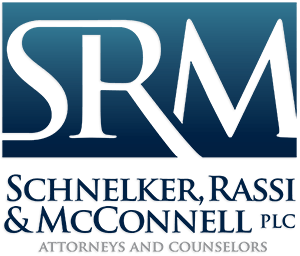Late last Friday evening, President Trump signed into law the Paycheck Protection Flexibility Act (the “PPFA”). The PPFA provides much sought after changes to the PPP Loan program by, among other things, reducing the required percentage of funds that must be applied to payroll expenses and increasing the length of time in which the funds can be used. The timing is good as many businesses who had not been able to open previously (and thus not fully utilize the PPP Loan benefits) will now be able to use these funds as they reopen.

You will likely receive further updates from your PPP Loan lender, but we wanted to highlight the key provisions for you so you can plan accordingly. The SBA will soon issue additional guidance on these new provisions. Among the SBA’s changes will be modifications to the PPP Loan forgiveness applications we discussed in a previous alert. For now, we recommend you wait for the updated forgiveness application before making application to your lender for loan forgiveness.
Key Changes to the PPP Loan Program
Key changes to the PPP Loan program enacted by the PPFA are as follows:
- Coverage Period Extended from 8 to 24 Weeks: The PPFA extends the covered period for loan forgiveness from eight weeks after the date of loan disbursement to 24 weeks after the date of loan disbursement, providing substantially greater flexibility for borrowers to qualify for loan forgiveness. Borrowers who have already received PPP loans retain the option to use an eight-week covered period if they choose.
- Reduced Threshold for Payroll Expenses: The PPFA lowers the prior requirement that 75 percent of a borrower’s loan proceeds must be used for payroll costs and that 75 percent of the loan forgiveness amount must have been spent on payroll costs during the 24-week loan forgiveness covered period. Now, those thresholds are 60 percent. If a borrower uses less than 60 percent of the loan amount for payroll costs during the forgiveness covered period, the borrower will continue to be eligible for partial loan forgiveness, subject to at least 60 percent of the loan forgiveness amount having been used for payroll costs. Essentially, the 60 percent requirement is now a threshold that must be crossed before any PPP Loan funds will be eligible for forgiveness.
- Safe Harbor if Unable to Rehire Employees: The PPFA now provides a safe harbor from reductions in loan forgiveness based on reductions in full-time equivalent employees, to provide protections for borrowers that are both unable to rehire individuals who were employees of the borrower on February 15, 2020, and unable to hire similarly qualified employees for unfilled positions by December 31, 2020. This includes an inability to reopen and hire back employees due to COVID-19 related operating restrictions like Michigan’s Stay at Home Orders.
- Increase in Loan Maturity: The PPFA increases to five years the maturity of PPP loans that are approved by SBA on or after June 5, 2020. It appears loans issued before this date will continue to have a two year maturity, but final guidance may state otherwise. The interest rate remains at 1%.
- Extension of Payment Deferral Period: The payment deferral period has changed from six-months to the date on which the SBA remits the loan forgiveness amount to the lender. If a borrower does not apply for forgiveness within 10 months after the end of the borrower’s Covered Period, it must begin to make payments to the lender.
- Payroll Tax Deferral Now Available: PPP loan borrowers may now also delay payment of their payroll taxes. That was a benefit under the original CARES Act, but the law previously prohibited PPP borrowers from taking advantage of that benefit. That is no longer the case.
- Application Deadline Confirmed: In addition, the PPFA confirms that June 30, 2020, remains the last date on which a PPP loan application can be approved. If you have not applied for a PPP Loan yet, we suggest you do so immediately.
The Bottom Line
Most of you have applied for and received your PPP Loan already, but many were not able to fully utilize the funds on forgivable expenses, due to the 8 week spend and rehire requirements. With the PPFA changes, many more borrowers should be able to utilize the majority of their PPP Loan funds for forgivable expenses.
As we have noted previously, many of you are diligently tracking your expenditure of PPP Loan Funds. In light of the PPFA changes, we suggest you review your current spending plan and make any adjustments to your use of the funds to ensure your use provides the greatest level of forgiveness possible.
Remember, failure to satisfy any forgiveness rule or test does not constitute, in and of itself, an improper use of PPP loan funds or subject you to any penalties. Instead, those funds, and any unused funds will simply remain part of your outstanding PPP loan on either a 2-year or 5-year term, at 1% interest, deferred for 6 months, with no personal guarantee or prepayment penalty. Therefore, you may use those funds for other, non-forgivable purposes, or simply pay them back to the lender.
As always, this situation continues to evolve and we expect there will be additional guidance and clarification on this program. We will continue to keep you updated as matters change. Please feel free to contact us with any questions.
Contact Us
Our lawyers in Grand Rapids, MI, would be more than happy to help with your case! Call Schnelker, Rassi & McConnell, PLC at (616) 828-1195 to set up a meeting with one of our trusted attorneys.


